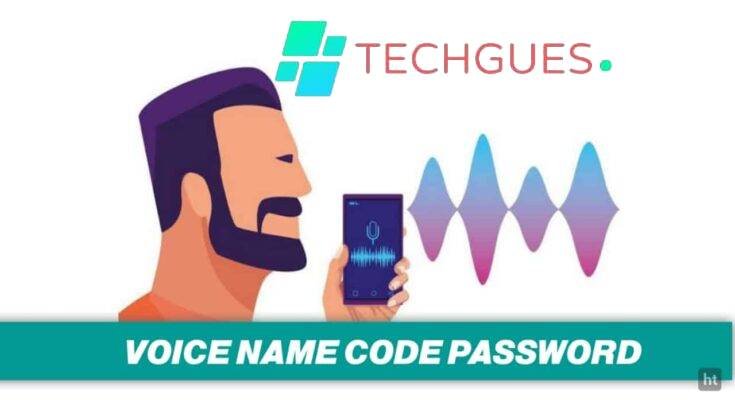Introduction voice lock screen
In the dynamic landscape of technology, innovation knows no bounds. One such revolutionary stride is the advent of Human Voice Lock Screen Apps. These cutting-edge applications bring a new dimension to smartphone security by harnessing the unique and intrinsic features of the human voice. In this article, we explore the functionalities, benefits, and potential impact of Human Voice voice lock screen on personal and mobile security.
Understanding Human Lock Screen Apps:
Human Voice Lock Screen Apps leverage advanced voice recognition technology to authenticate and grant access to smartphones. Unlike traditional methods such as PINs, patterns, or fingerprint scans, these apps rely on the distinctiveness of an individual’s voice pattern for security purposes. By analyzing various vocal characteristics, including pitch, tone, and cadence, these apps create a secure biometric profile unique to each user voice lock screen.
Key Features:
- Voiceprint Authentication: Human Lock Screen Apps use sophisticated algorithms to create voiceprints, which are unique representations of an individual’s vocal characteristics. This ensures a high level of security as voiceprints are difficult to replicate or forge.
- Anti-Spoofing Measures: To prevent unauthorized access through voice recordings, these apps often incorporate anti-spoofing measures. Advanced algorithms can detect the difference between a live voice and a prerecorded one, adding an extra layer of protection.
- User-Friendly Interface: The convenience of unlocking a device with a simple spoken command adds to the user-friendly nature of these apps. Users can set personalized wake-up phrases or commands, making the authentication process intuitive and natural.
Benefits of Human Lock Screen Apps:
- Enhanced Security: Human voiceprints are as unique as fingerprints, providing a robust and secure method of authentication. This uniqueness significantly reduces the risk of unauthorized access compared to traditional security measures voice lock screen.
- Convenience and Speed: Unlocking a device with a voice command is not only secure but also convenient and swift. Users can access their smartphones without the need for physical interaction, offering a seamless and efficient experience.
- Accessibility: Human voice lock screen cater to individuals with disabilities who may find traditional methods challenging. The inclusive nature of voice recognition technology ensures that a wider range of users can benefit from advanced security features.
- Versatility: These apps are versatile and can be integrated into various applications beyond mobile devices, such as smart home systems, automotive technology, and more. The adaptability of voice recognition technology makes it a powerful tool for securing a variety of digital environments.
Future Implications:
As technology continues to evolve, the integration of Human voice lock screen into mainstream security protocols is poised to redefine the way we protect our digital lives. The ongoing development of artificial intelligence and machine learning in this field will likely enhance accuracy, making voice recognition technology an even more formidable guardian of personal data and information.
Challenges and Considerations:
While Human voice lock screen offer a promising future for mobile security, it’s essential to acknowledge potential challenges and considerations. One notable concern is the accuracy of voice recognition technology, especially in noisy environments or situations where a user’s voice may change due to illness or other factors. Continuous improvements in machine learning algorithms are expected to address these challenges, but developers must remain vigilant in refining their systems.
Additionally, privacy concerns arise with the collection and storage of voice data. Developers of these applications must prioritize robust encryption and implement stringent privacy policies to ensure user data remains secure and confidential. Clear communication about how voice data is handled, stored, and protected is crucial to building and maintaining user trust.
Integration with Emerging Technologies:
As Human voice lock screen become more prevalent, their integration with other emerging technologies is worth noting. Combining voice recognition with artificial intelligence and biometric sensors could lead to even more advanced and secure authentication methods. For instance, integrating facial recognition technology with voiceprint authentication could create a multi-modal approach, enhancing both security and user experience.
Moreover, the potential synergy with wearable devices opens up new possibilities. Wearable technology, such as smartwatches and earbuds, could serve as additional authentication devices, ensuring a seamless and secure connection between the user and their devices.
The Role in Smart Environments:
Beyond smartphones, Human voice lock screenare likely to play a pivotal role in securing smart environments. As homes become more interconnected through the Internet of Things (IoT), voice recognition technology can serve as a secure means of authentication for smart home devices. Users could control their lights, thermostats, and other connected devices effortlessly with voice commands, knowing that their voiceprint adds an extra layer of security.
In the automotive sector, voice recognition could enhance the security of vehicle access and control systems. Drivers could unlock and start their cars with a simple voice command, adding both convenience and security to the driving experience.
Rising Industry Adoption:
As Human voice lock screengain momentum, industry leaders are increasingly recognizing their potential and incorporating this technology into their products. Smartphone manufacturers, in particular, are embracing voice recognition as an additional layer of security. The integration of voice authentication in flagship devices reflects a shift towards recognizing the importance of user-friendly yet robust security features.
Moreover, the rising popularity of voice-activated virtual assistants like Siri, Google Assistant, and Amazon Alexa showcases the growing acceptance and integration of voice technology in our daily lives. As these virtual assistants become more sophisticated, they contribute to refining voice recognition algorithms, creating a positive feedback loop that benefits Human voice lock screen.
Conclusion:
Human Lock Screen Apps represent a transformative step in the evolution of mobile security. The marriage of advanced voice recognition technology with the everyday convenience of voice commands creates a secure and user-friendly authentication experience. As these applications continue to evolve and overcome challenges, they are likely to become an integral part of the broader digital security landscape.
The future promises not only enhanced security but also a more seamless and personalized interaction with our digital devices and surroundings. Human Voice Lock Screen Apps are at the forefront of this technological evolution, offering a glimpse into a future where our voices become the keys to unlocking a world of possibilities securely and effortlessly.




